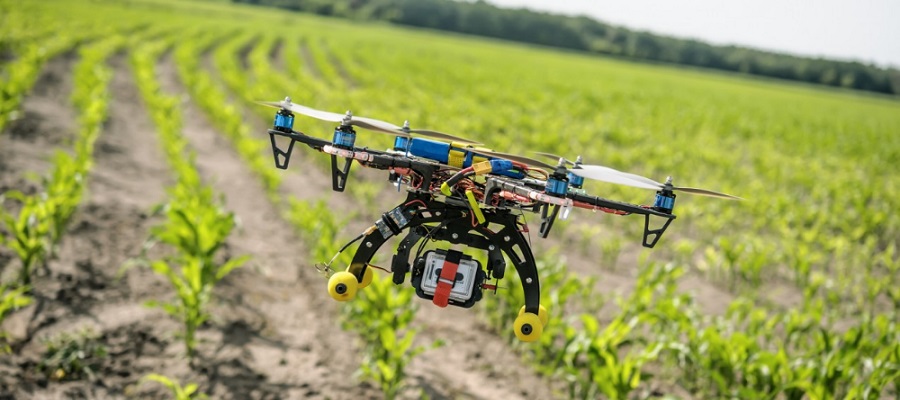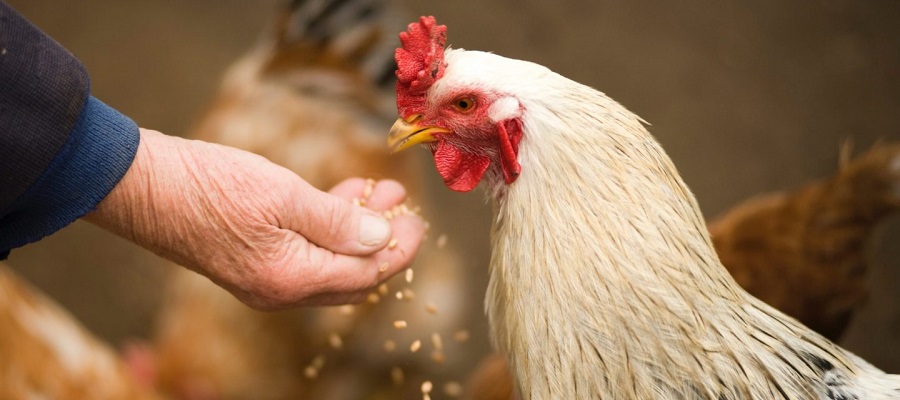Smart farming is an emerging concept that refers to the management of farms using the latest information and communication technologies. With the goal of increasing the quantity and quality of products while optimizing the required human labor. For example, in 1999 IMS launched the first version of the agricultural information system GELAN, which is now in its fourth generation and used by over 30,000 users. The SuisData information system, developed by IMS together with SUISAG, enables operators of pig breeding and fattening farms to control their individual animal data on the one hand, and at the same time to manage the sales process of items such as boar semen and agricultural goods - from the receipt of the order to the creation of delivery bills and the dispatch of invoices.
Categories of smart farming
There are various categories with regard to smart farming.
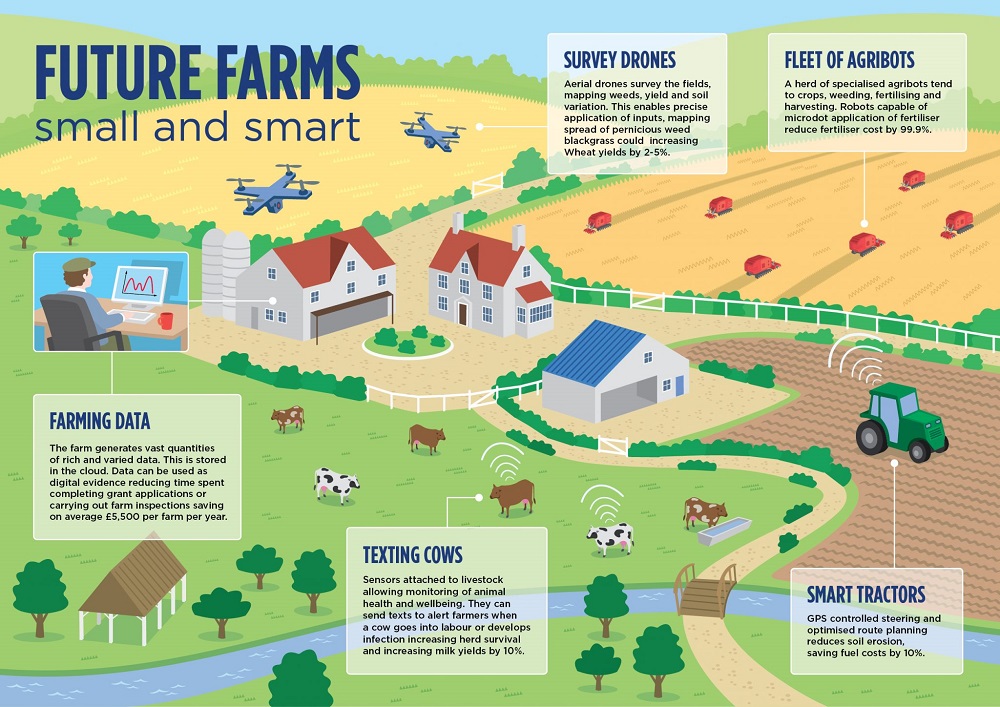
Smart farming - Source: wespeakiot.com
Animal
Digitization in animal husbandry: Sensors ensure the right barn climate and also monitor each animal individually. In addition to economic efficiency, animal health as well as transparency and quality in the processes are important aspects of today's agriculture. Smart farming supports these requirements.
Soil & Plant
Precision farming contributes to sustainable and resource-saving crop production. Digital technologies such as satellite signals or soil sensors provide important data and information that support the farmer in his decisions. Precision farming is the basis of smart farming.
Organization
Herd management systems or electronic field calendars record individual sections of the farm. Aspects of a digitized agricultural office are: more space and order and thus faster finding of important documents and records. This often helps
also for a better organization of the agricultural business.
Sensors
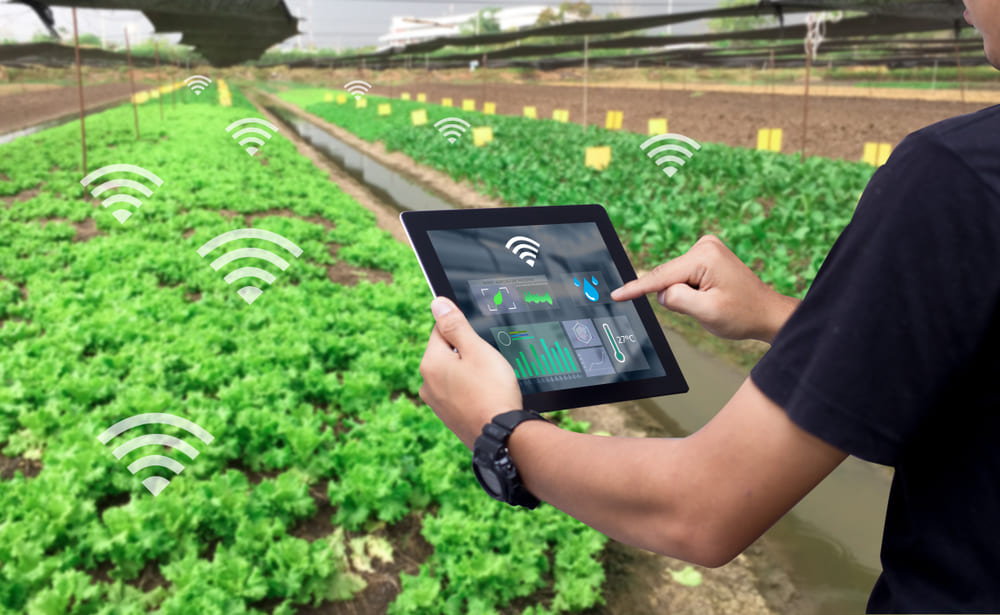
Smart farming - Source: idvelocity.com
Agricultural production has changed in many respects in recent years. For example, the use of electronics and sensors is playing an increasingly important role in today's agriculture at a wide variety of levels. From tractors and machines for tilling the field to soil sensors for measuring water availability, barn monitoring and measuring the activity of individual animals, a wide range of sensors are used today to record the current status, the respective settings or the consumption of operating resources.
Enclosed is an overview of the most important sensors used in agriculture. In practice, however, it is increasingly a combination of different sensors.
Optical sensors
Like all optical sensors, the Crop Sensor measures the light reflected by the plant in the red and infrared spectral range and uses this to calculate the condition of the crop.
Acoustic sensors
In agriculture, ultrasonic sensors monitor the heights at the boom of field sprayers.
Radar Sensors
With a radar sensor it is possible to perform a distance measurement of objects. In addition to distance measurement, the relative speed of an object can also be measured.
LiDAR Sensors
LiDAR sensors are able to precisely determine height, volume and mass of an object (plant, swath, animal, ...).
Accelerometer/ Gyroscope
The accelerometer measures the tilt position, while the gyroscope determines the rotation rate.
Conductivity sensors
This physical property of the soil changes strongly depending on the respective water content. The measurement of moisture in the soil is determined by measuring the dielectric permittivity / dielectric constant ε = 1 (air) to ε = 80 (water) ( VWC = Volumetric Water Content = Volumetric Water Content in %).
MRT (Magnetic Resonance Imaging)
For the first time, at AGRITECHNICA 2019, SAMSON AGRO A/S will show a preview of a new nuclear magnetic resonance (NMR) sensor system - for accurate counting of nutrients in organic manure in real time. The sensor will be available via a mobile system integrated into SAMSON PG II slurry tankers, which will take representative slurry samples for analysis in real time.
Induction
The Topsoil Mapper from Geoprospectors uses sensors to scan the conductivity of the soil in 4 layers down to a depth of approx. 1m.
Temperature sensors
Temperature sensors are electrical and electronic components which, as sensors, make the temperature measurable via a specific electrical signal. They can transmit this signal directly or indirectly, for example by changing the resistance. They are also referred to as heat sensors or thermal sensors. Temperature sensors are used, among other things, in the control of circuits. Temperature sensors are also called heat sensors, temperature sensors or heat sensors.
RFID
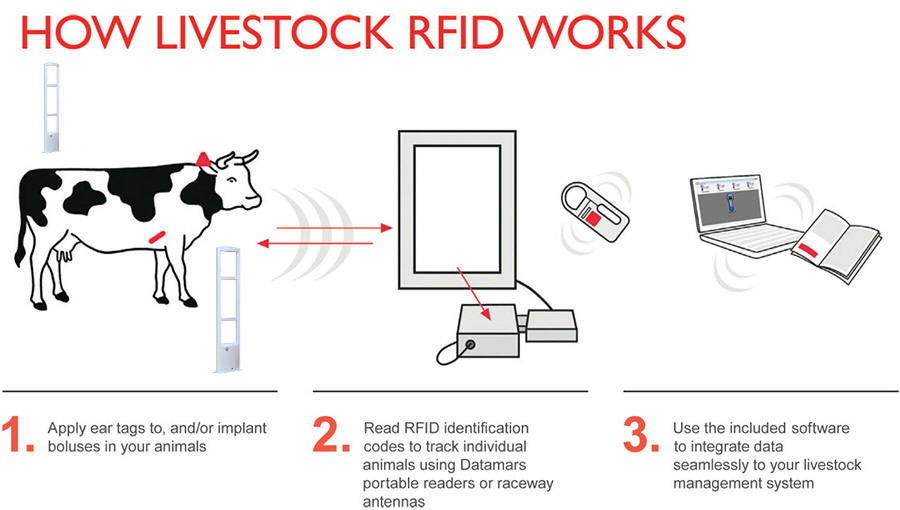
How RFID works in agriculture - Source: ravirajtech.com
A system for the wireless transmission of information by means of tiny so-called transponders or tags. In their simplest form, they are used only for the secure identification of living beings and products.
pH-value measurement
The pH value is most often determined by electrochemical means rather than by acid-base indicators. The most common measurement principle uses the potential of a glass electrode, which is also called a pH electrode.
Anemometer
The anemometer measures the wind speed. It consists of small shells that the wind turns in a circle. The faster the anemometer spins, the stronger the wind blows. It has a vertical axis and three or four cups that hold the wind.
Pyranometer
A pyranometer is a sensor for measuring the irradiance of the sun. Blackened receiving surfaces of active solder joints of the thermocouples absorb the incident radiation and heat up compared to passive solder joints inside the device. The temperature differences that occur generate thermoelectric voltages that are a measure of the received irradiance.

